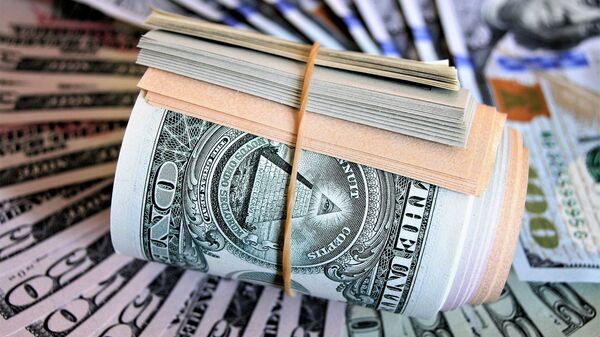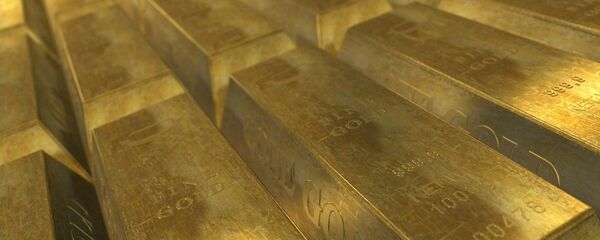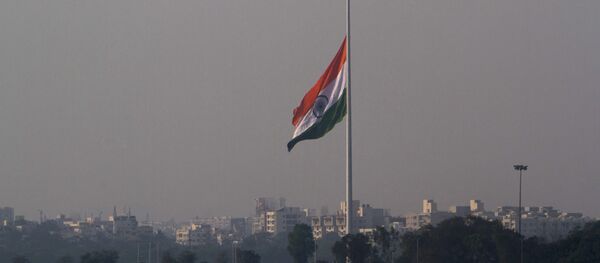When the Board of India’s apex bank, RBI, met earlier this month, it had a prominent agenda, even though officially the meeting was convened to approve a dividend of $7.6 billion to the Indian government.
The board discussed a phenomenal rise in the foreign exchange reserves held by banking regulator Reserve Bank of India (RBI) and also whether there is a need for a sustained dollar buy to bolster the reserves.
Sources revealed to Sputnik that a “good deal of discussion took place on the matter”, which remained inconclusive, but not without strong argument both in favour and against the issue.
There has been a meteoric rise in foreign exchange reserves held by the RBI this year.
According to data from the bank, India’s foreign exchange reserves went up to $538 billion on 7 August, registering an increase of $80.7 billion since the beginning of the year.
About 60 percent of Forex reserves held by RBI are parked in sovereign backed securities in the economies that boast the top ratings, while the remaining amount is invested with central banks of other countries.
It is reported that India has invested about $70 billion in US Treasury Bills.
According to estimates, the reserves at this level can fund imports for a period of 15 months. The question, however, arises if the Indian banking regulator RBI keeps buying dollars.
Talking to Sputnik on condition of anonymity, a former RBI governor said: “One must understand that the dollar is a hedge against uncertainties. And in the recent times, uncertainties are at the peak with the COVID caseload increasing and the possibility of a vaccine or medicine only in distant future.”
“Secondly, India is saving on dollars due to low crude oil prices, and gold imports, which are a temporary phenomenon in the aftermath of the pandemic leading to current account surplus.”
“All these issues must be factored before arriving at a decision on whether to continue buying dollars or put a pause to it,” the former governor added.
According to a report from Care Ratings, India’s oil imports are projected to decline by 8.9 percent in the current financial year (April 2020 – March 2021).
“Owing to the lack of demand from the Indian refiners, the daily crude oil imports is projected to fall to 4.14 million barrels in the financial year from 4.5 million barrels per day last year,” according to the report.
Sharing a foreign exchange trader’s perspective, Soumya Dutta, CEO of Eforexindia.com, a currency trading business, told Sputnik, “We have seen a lot of sustained dollar purchase by the RBI, which may be aimed at creating a buffer amid the uncertainties.”
“The bank seems to be building upon the dollar just in anticipation of challenging days ahead.”
There are reportedly concerns that stocking up on dollars could invite trouble from India from the US.
“A Citigroup report on the issue in June warned that RBI’s Forex intervention could invite “some caution” and “create unease in India-US relations.” India added $22 billion to its Forex reserves in June itself.
According to Citi, RBI’s intervention in the Forex market is at some $30 billion in 2020, after accounting for valuation changes and return on reserves.
“RBI’s intervention could have already crossed 2 percent of GDP, which could create unease in India-US relations,” the report added.
The US treasury has three major yardsticks to measure whether a trading partner is engaging in currency manipulation.
The efforts are aimed at keeping a tab on trading partners to prevent them from gaining a competitive edge in exports by devaluing their currency.
In the past, the US has put India under scrutiny over the latter's purchase of dollars.
In 2017, the US Treasury began to monitor India for currency manipulation, adding Delhi to an ongoing list that includes China, Japan, South Korea, Switzerland, and Germany.
The US Treasury in an October 2017 report said, “Over the first half of 2017, there has been a notable increase in the scale and persistence of India’s net foreign exchange purchases, which have risen to around $42 billion (1.8 percent of GDP) over the four quarters.”




